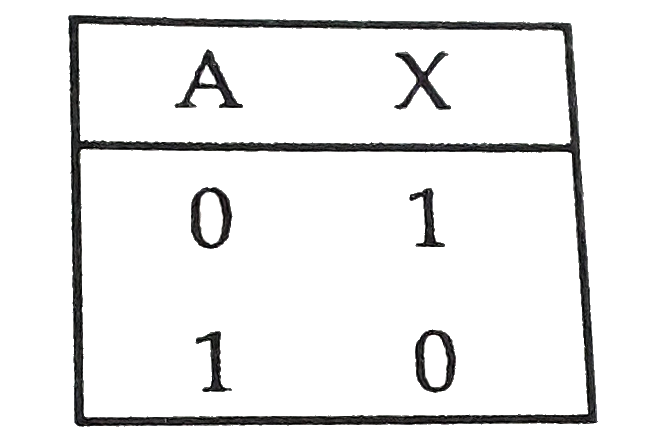Without using truth table, prove that [(p∨q)∧~p]→q is a tautology.
To prove that the expression ((p∨q)∧¬p)→q is a tautology without using a truth table, we will use logical identities and laws step by step.
1. Start with the given expression:
((p∨q)∧¬p)→q
2. Apply the implication law:
Recall that A→B is equivalent to ¬A∨B. Thus, we can rewrite the expression:
¬((p∨q)∧¬p)∨q
3. Apply De Morgan's Law:
According to De Morgan's Law, ¬(A∧B)=¬A∨¬B. Applying this to our expression:
¬(p∨q)∨¬(¬p)∨q
This simplifies to:
¬(p∨q)∨p∨q
4. Apply De Morgan's Law again:
Now, we can apply De Morgan's Law to ¬(p∨q):
(¬p∧¬q)∨p∨q
5. Rearranging the expression:
We can rearrange the expression using the associative and commutative properties:
p∨(¬p∧¬q)∨q
6. Apply the Absorption Law:
According to the Absorption Law, p∨(p∧q)=p. Thus, we can simplify:
p∨q
7. Final simplification:
Now we have:
p∨q
This is always true because if p is true, the expression is true, and if p is false, then q must be true (since we are considering the case where (p∨q)∧¬p holds).
8. Conclusion:
Since p∨q can be true regardless of the truth values of p and q, we conclude that:
((p∨q)∧¬p)→q
is a tautology.
((p∨q)∧¬p)→q
Recall that A→B is equivalent to ¬A∨B. Thus, we can rewrite the expression:
¬((p∨q)∧¬p)∨q
According to De Morgan's Law, ¬(A∧B)=¬A∨¬B. Applying this to our expression:
¬(p∨q)∨¬(¬p)∨q
This simplifies to:
¬(p∨q)∨p∨q
Now, we can apply De Morgan's Law to ¬(p∨q):
(¬p∧¬q)∨p∨q
We can rearrange the expression using the associative and commutative properties:
p∨(¬p∧¬q)∨q
According to the Absorption Law, p∨(p∧q)=p. Thus, we can simplify:
p∨q
Now we have:
p∨q
This is always true because if p is true, the expression is true, and if p is false, then q must be true (since we are considering the case where (p∨q)∧¬p holds).
Since p∨q can be true regardless of the truth values of p and q, we conclude that:
((p∨q)∧¬p)→q
is a tautology.
Topper's Solved these Questions
- MATHEMATICAL LOGICBOOK - NAVNEET PUBLICATION - MAHARASHTRA BOARDCHAPTER - MATHEMATICAL LOGICEXERCISE - EXAMPLES FOR PRACTICE 2 OR 3 MARKS EACH
24 Videos
- MATHEMATICAL LOGICBOOK - NAVNEET PUBLICATION - MAHARASHTRA BOARDCHAPTER - MATHEMATICAL LOGICEXERCISE - EXAMPLES FOR PRACTICE 3 MARKS EACH
4 Videos
- LINEAR PROGRAMMING BOOK - NAVNEET PUBLICATION - MAHARASHTRA BOARDCHAPTER - LINEAR PROGRAMMING EXERCISE - EXAMPLES FOR PRACTICE
8 Videos
- MATRICESBOOK - NAVNEET PUBLICATION - MAHARASHTRA BOARDCHAPTER - MATRICESEXERCISE - MULTIPLE CHOICE QUESTIONS
12 Videos
Similar Questions
((p∨q)∧~p)→q
View SolutionWithout using truth table show that
~(p∨q)∨(~p∧q)≡~p
View SolutionUsing truth table prove that ~p∧q
≡(p∨q)∧~p
View SolutionWithout using truth tables,show that p∧(q∨~p)≡p∧q
View SolutionUsing truth table verify that ~(p∨q)≡~p∧~q
View SolutionUsing truth table ,prove that p↔q≡(p∧q)v(~p∧~q).
View SolutionAnswer the following questions
Without using truth table show that
(p∨q)∧(~p∨~q)≡(p∨~q)∧(~p∨q)
View Solutionprove that (p∧q)∧~(p∨q) is a contradiction.
View SolutionShow that (p∧q)∨(~p)∨(p∧~q) is a tautology
View SolutionThe given truth table is for

View Solution
